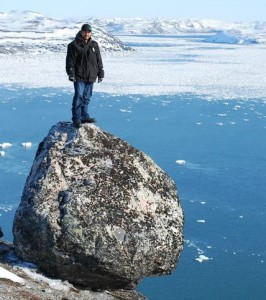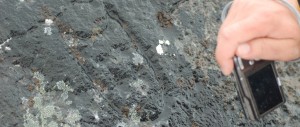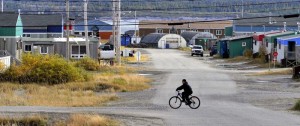As tourism destinations and products become increasingly interchangeable, local aboriginal cultures have become a key differentiator to remain competitive. This raises many questions on how indigenous groups and the tourism industry can best work together for a greater good.
[caption id="attachment_11954" align="pull-right" width="266" caption="Nunavik Landscape. Photo by Inuit Adventures."]" [/caption]
[/caption]
By Daniel Kreuger, Puddle Jump Consulting
Dan has been working as a senior advisor for the Kativik Regional Government in Nunavik, Canada, for the past four years helping to develop a community-based tourism industry that enhances the socio-cultural and environmental integrity of local Inuit communities.
Trend watchers at the recent Adventure Travel World Summit (ATWS) 2011 in Chiapas, Mexico (has it been 3 months already?!?) looked into their crystal balls to shed some light on the future of the adventure tourism industry. Through a misty haze the ideas of ‘authenticity’, ‘giving back, ‘participation’, and ‘engagement’ resonated with the crowds.
Bruce Poon-Tip challenged us to “change people’s lives” through our travel experiences; Mary-ann Fernandez encouraged mutually beneficial philanthropic alliances; ATTA’s own Shannon Stowell noted the “Tribalization of Business” and the empowerment of consumers through social communities. Many other presenters extolled the benefits and virtues of sharing stories and meaningful interactions to create a genuine, authentic experience for your guests.
As a destination development consultant who has worked with Inuit communities in Canada’s far north over the past 12 years, these consumer and industry trends are encouraging. They offer something the emerging communities of Nunavik in northern Quebec, for example, can build upon to further their own socio-economic ambitions. On the surface at least, these trends seem to be in perfect alignment with the development needs of thousands of similar indigenous communities around the world. Even the adopted lexicon of ‘Tribes’, ‘Community’, and ‘Storytelling’ seem suitably compatible.
On the surface at least, it would seem that the timing is right to begin a dialogue on the challenges of packaging indigenous and cultural tourism products for the adventure traveller.

An Unfortunate Truth
In the increasingly homogenous world of tourism products, the ancient cultures that act as the custodians of human history and places left unexplored have become a very desirable commodity. The unfortunate truth, however, is that these same cultural groups often live on the economic fringes of the modern world, struggling to feed their families, educate their young, and sustain their communities for future generations. The urgency and desperation of these cultures was personified in the eyes of Martha Isabel Ruiz Corzo, whose passionate words repeatedly brought a room of rugged adventure travelers to shed empathetic tears.
During the Summit, a number of aboriginal and industry leaders attended the Indigenous Tourism forum to share their experiences and concerns. Their objective was to begin a dialogue about the issues of developing responsible cultural tourism products, as well as to begin working towards viable solutions and best practices that could influence a positive change in the adventure travel industry. This gathering was a good start, but I think most participants would agree that there’s much more that needs to be done.
The Missing Voice

A number of thought-provoking topics were introduced, such as indigenous ownership and the community’s right to negotiate as an equal to decide if and what types of tourism are appropriate; how to protect local cultural values in the face of new ideas and opportunities that increased tourism will proffer; how to structure tourism initiatives so that the profits are reinvested in the community for the benefit of the whole rather than select individuals; how to develop a plan that ensures meaningful jobs in the management and delivery of tourism products, especially for local youth; and how to balance consumer desire for “authentic” cultural experiences with a community need to develop as a modern society.
The conversation continued throughout the afternoon, and there were many valuable contributions. However, it became apparent that there was a missing voice. The conversation was very forward thinking that could be summed up as, “How will we deal with success?” Given the history of colonization and how that has played out over the past 150 years, I can fully appreciate why Indigenous communities would be acutely interested in the ramifications of this question.
However, in my work, we more commonly struggle with the question, “How can we become successful?” I think that this latter question is what preoccupies the minds of tourism professionals and business owners. It’s more at the operational level. It revolves around how to identify and target niche markets; how to be cost-efficient; how to use social media; and how to maintain quality and consistency of product and service.
I think tour operators would like to work with indigenous communities to develop mutually beneficial products, but they have their own set of concerns. There is an awkward hesitation – a discord between the ‘philanthropic’ ideals that permeate adventure tourism brochures and their practical application in the real world.
I “think”, but I don’t know for sure, because this voice has been missing in the dialogue.
An Invitation to “Be Uncomfortable”

If we are setting out to use tourism as a development tool to improve the lives of local people and communities, then the dialogue surrounding the challenges of such initiatives need to be taken to the next level – beyond the ‘feel good’ rhetoric. We need to ask the uncomfortable (sometimes ugly) questions. We need to listen to the answers, especially when they’re not what we want to hear.
To move forward, we need to create the necessary conflict that inspires critical thinking and reflection, that challenges our own ideologies, and further leads to innovative solutions that can be acted upon. We need a respectful but honest conversation that seeks a deeper understanding of the issues and proposed solutions so that real change can happen.
During his presentation, Corey Rich offered that to achieve great things, you must endure being “uncomfortable”. In the post-Summit banter, I have chatted with Christopher Doyle to follow-up on his suggestion to use the HUB and ATN to further the dialogue about issues of indigenous tourism development. Today we are taking the first steps to extend the challenge and opportunity to a wider audience to get involved - to share your thoughts and opinions, your concerns and possible solutions.
The conversation needs many voices. It is not judgmental. It is not exclusive. Quite the contrary, many of the issues that are illustrated by indigenous tourism initiatives overlap with other sectors of developments. This includes voluntourism, rural tourism, geotourism, destination management, and even mass tourism.
Join the conversation and help make this happen – have your voice be heard, challenge your perceptions, and listen to the voices of others with an open mind. I believe this is going to be a fascinating journey of discovery, unlike any other, and it’s only possible if we take it together.
